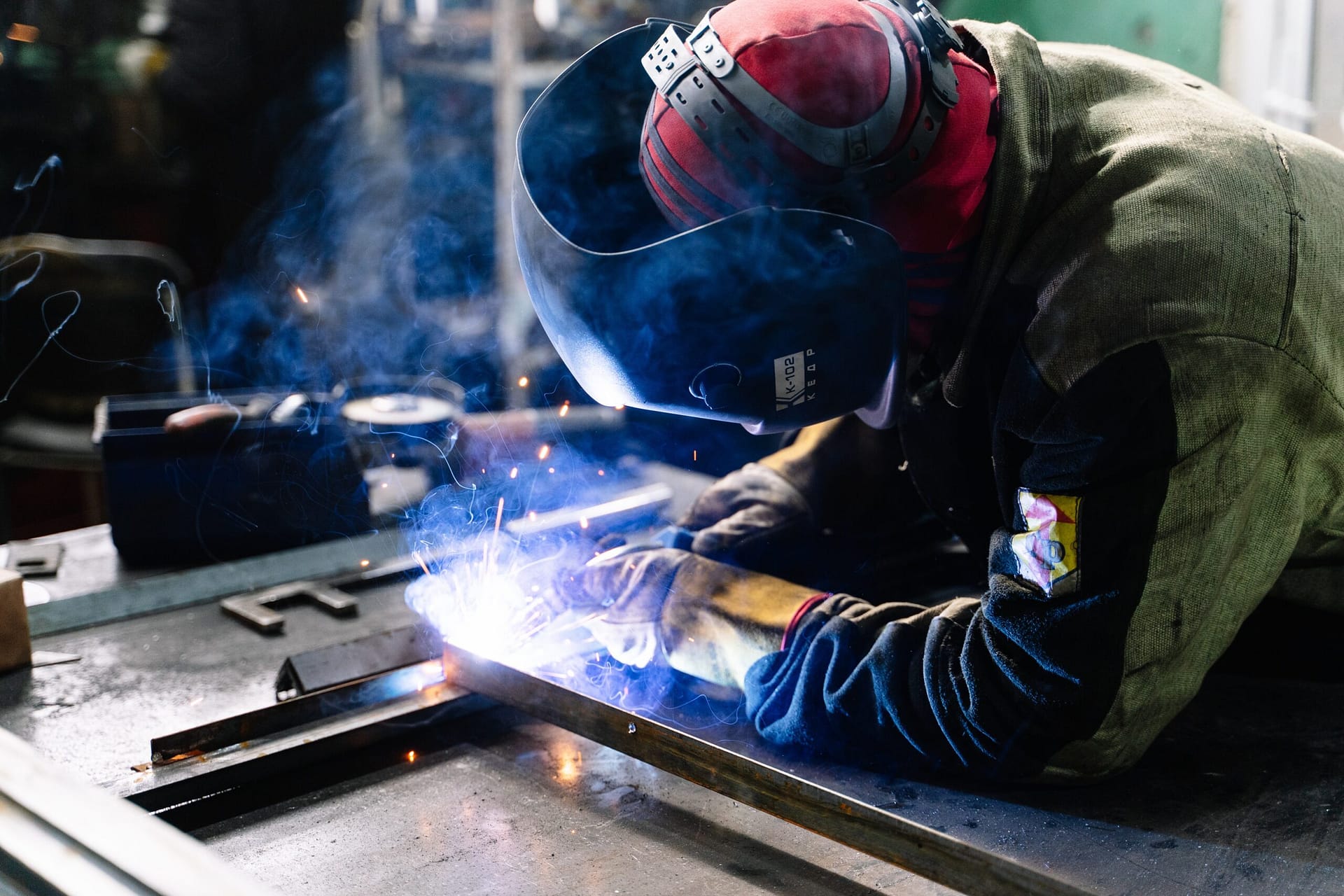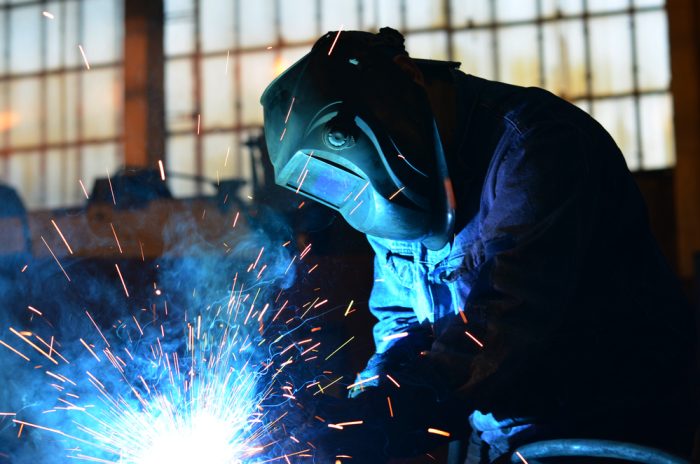Usual Welding Repair Service Issues and Exactly How to Address Them Successfully
Welding repair work frequently run into a series of issues that can threaten the honesty of the end product. Common issues consist of insufficient infiltration, porosity, and misalignment, amongst others. Each defect presents one-of-a-kind challenges that need details approaches for resolution. Recognizing these concerns is essential for welders aiming to improve their skills and outcomes. This discussion will certainly explore these usual welding repair service issues and effective methods to resolve them.
Insufficient Infiltration
Inadequate penetration takes place when the weld steel fails to fully fuse with the base material, causing weak joints and prospective structural failings. This issue often originates from not enough heat input, wrong electrode angle, or incorrect welding speed. Welders might run into insufficient infiltration as a result of a miscalculation of the essential parameters for a specific material thickness or type. In addition, contamination on the base material's surface can prevent reliable bonding, aggravating the trouble. To deal with inadequate penetration, welders must assure proper settings on their equipment and keep a tidy job surface area. Routine inspection of welds is advised to identify any kind of deficiencies early, enabling prompt corrections and the prevention of jeopardized architectural honesty in welded settings up.
Porosity
Porosity is a common defect in welded joints that materializes as small gas bubbles trapped within the weld metal. This defect can compromise the stability of the weld, leading to decreased strength and prospective failure under stress. Montana Mobile Welding and Repair Belgrade. Porosity generally arises from contamination, dampness, or incorrect welding methods, which enable gases to escape right into the molten weld pool. To deal with porosity, welders must guarantee correct surface prep work, maintain a clean workplace, and use appropriate welding specifications. In addition, choosing the right filler material and securing gas can alleviate gas entrapment. Regular evaluation and testing of welds can help determine porosity early, assuring prompt rehabilitative actions are taken, consequently protecting the high quality and integrity of the welded structure
Misalignment
Misalignment in welding can emerge from numerous variables, consisting of inappropriate arrangement and thermal growth. Comprehending the origin is important for efficient resolution. Numerous improvement strategies are readily available to realign components and ensure structural stability.
Reasons for Imbalance
Welding imbalance typically stems from a variety of underlying problems that can compromise structural stability. One key reason is incorrect fit-up of elements prior to welding, which can cause gaps and unequal surfaces. Variants in thermal growth during the welding procedure can also result in distortion, specifically if the products being joined have different coefficients of development. Furthermore, insufficient fixturing and clamping may fall short to hold elements firmly in position, causing motion during welding. Inadequately kept devices, consisting of welding machines and devices, might introduce inconsistencies in the weld bead, more contributing to imbalance. Driver mistake, stemming from not enough training or experience, can also play a significant function in producing misaligned welds.

Adjustment Methods Readily Available
Attending to misalignment successfully calls for a mix of rehabilitative methods tailored to the particular concerns available. One typical approach is the use of jigs or components to hold parts in the right setting throughout welding, ensuring consistent alignment. Additionally, pre-heating the materials can help in reducing distortion and improve fit-up. For substantial imbalance, mechanical realignment techniques, such as utilizing hydraulic jacks or clamps, can be used to fix the setting prior to welding. Post-weld heat therapy might also be required to eliminate stresses caused by misalignment. Finally, cautious evaluation and modification throughout the configuration phase can prevent misalignment issues from ending up being substantial issues, advertising a smoother welding procedure and enhancing overall structural honesty.
Distortion
Distortion is a typical difficulty in welding that can develop from various elements, consisting of unequal cooling and heating. Understanding the reasons for distortion is vital for applying efficient avoidance methods. Resolving this concern not only enhances architectural integrity but also enhances the overall high quality of the weld.
Reasons of Distortion
When based on the intense warmth of welding, materials usually undergo adjustments that can result in distortion. This sensation primarily emerges from thermal expansion and tightening throughout the welding process. As the weld area warms up, the material increases; upon cooling, it gets, which can create internal stress and anxieties. Additionally, uneven home heating across a workpiece can exacerbate these stresses, leading to warping or bending. The sort of material also plays a considerable function; steels with differing thermal conductivity and coefficients of growth may react in a different way, causing unforeseeable distortions. Furthermore, bad joint style and insufficient fixturing can add to misalignment throughout welding, raising the likelihood of distortion. Comprehending these reasons is important for reliable welding repair service and prevention methods.
Prevention Techniques
Reliable avoidance methods for distortion throughout welding concentrate on controlling heat input and making certain appropriate joint design. Keeping a consistent heat input aids to decrease thermal development and contraction, which can cause distortion. Making use of methods such as preheating the workpiece can likewise lower the temperature level gradient, promoting uniform home heating. In addition, choosing ideal joint layouts, such as T-joints or lap joints, can enhance stability and lower stress and anxiety focus. Applying appropriate fixturing to secure the workpieces in area additionally aids in keeping positioning during the welding process. Staggered welding series can disperse warmth much more evenly, protecting against localized distortion. By applying these strategies, welders can significantly lower the possibility of distortion and improve the overall high quality of their welds.
Splitting
Breaking is a typical issue run into in welding repairs, typically arising from different variables such as inappropriate air conditioning prices, material selection, or insufficient joint prep work. The event of cracks can substantially endanger the integrity of the weld, causing prospective failings during procedure. you can try these out To address this concern, welders must initially assess the origin, making certain that products are compatible and suitably chosen for the particular application. In addition, controlling the air conditioning rate during the welding procedure is important; fast air conditioning can cause tension and lead to splitting. Correct joint style and prep work likewise add to decreasing the risk. Implementing these strategies can improve weld high quality and toughness, ultimately minimizing the chance of cracking in finished weldments.

Incomplete Combination
A substantial problem in welding repair work is incomplete fusion, which takes place when the weld metal does not effectively bond with the base product or previous weld passes - Montana Mobile Welding and Repair Belgrade. This defect can cause weaknesses in the joint, possibly jeopardizing the honesty of the welded structure. Elements adding to insufficient combination include not enough warmth input, improper welding strategy, and contamination of the surfaces being joined. To address this issue efficiently, welders need to guarantee proper pre-weld cleansing and surface area preparation, as well as adjust their welding parameters to achieve sufficient infiltration and blend. Normal assessment throughout the welding procedure can also aid determine incomplete fusion early, permitting for timely rehabilitative actions to enhance the general high quality of the weld
Overheating
While welding fixings can enhance architectural honesty, overheating presents a considerable challenge that can bring about product destruction. Too much warm throughout welding can change the mechanical properties of steels, resulting in lowered stamina, raised brittleness, and warping. This sensation is especially vital in high-stress applications where architectural integrity is vital. Identifying overheating can entail visual examinations for staining or distortion, in addition to checking temperature level during the welding procedure. To mitigate the risks connected with overheating, welders must employ ideal strategies, such as regulating warm input, readjusting traveling rate, and using suitable filler products. Additionally, applying pre- and post-weld warm treatments can assist recover material homes and boost the overall high quality check of the repair, guaranteeing long-lasting performance and this link security.
Often Asked Inquiries
What Are the Usual Signs of a Welding Problem?

Exactly How Can I Check My Welds for High quality?
To check welds for top quality, one can make use of visual assessments, ultrasonic testing, and radiographic techniques. Each technique ensures architectural stability, recognizes issues, and confirms adherence to defined standards, eventually boosting the reliability of the welded joints.
What Safety Precautions Should I Take While Welding?
When welding, one need to prioritize safety and security by putting on ideal personal safety tools, ensuring correct ventilation, protecting flammable products away, keeping a tidy workspace, and being aware of environments to avoid injuries and mishaps.
Can I Fix a Weld Without Redesigning the Entire Joint?
Repairing a weld without renovating the whole joint is possible, depending upon the damage (Belgrade). Strategies such as grinding, adding filler material, or utilizing a welding process can effectively deal with certain problems while maintaining the bordering framework
What Tools Are Essential for Efficient Welding Repairs?
Crucial devices for efficient welding repair services include a welding maker, cord brush, grinder, safety gear, clamps, and filler materials. Each device plays an important role in ensuring quality and safety and security throughout the repair work process. Porosity generally arises from contamination, dampness, or incorrect welding techniques, which enable gases to escape right into the liquified weld swimming pool. Poorly conserved tools, including welding equipments and devices, may introduce variances in the weld bead, additional adding to misalignment. When subjected to the intense heat of welding, products commonly go through adjustments that can lead to distortion. Fracturing is an usual concern run into in welding repair work, frequently resulting from various factors such as incorrect cooling prices, material selection, or insufficient joint prep work. A significant concern in welding repair work is insufficient blend, which occurs when the weld metal does not properly bond with the base product or previous weld passes.